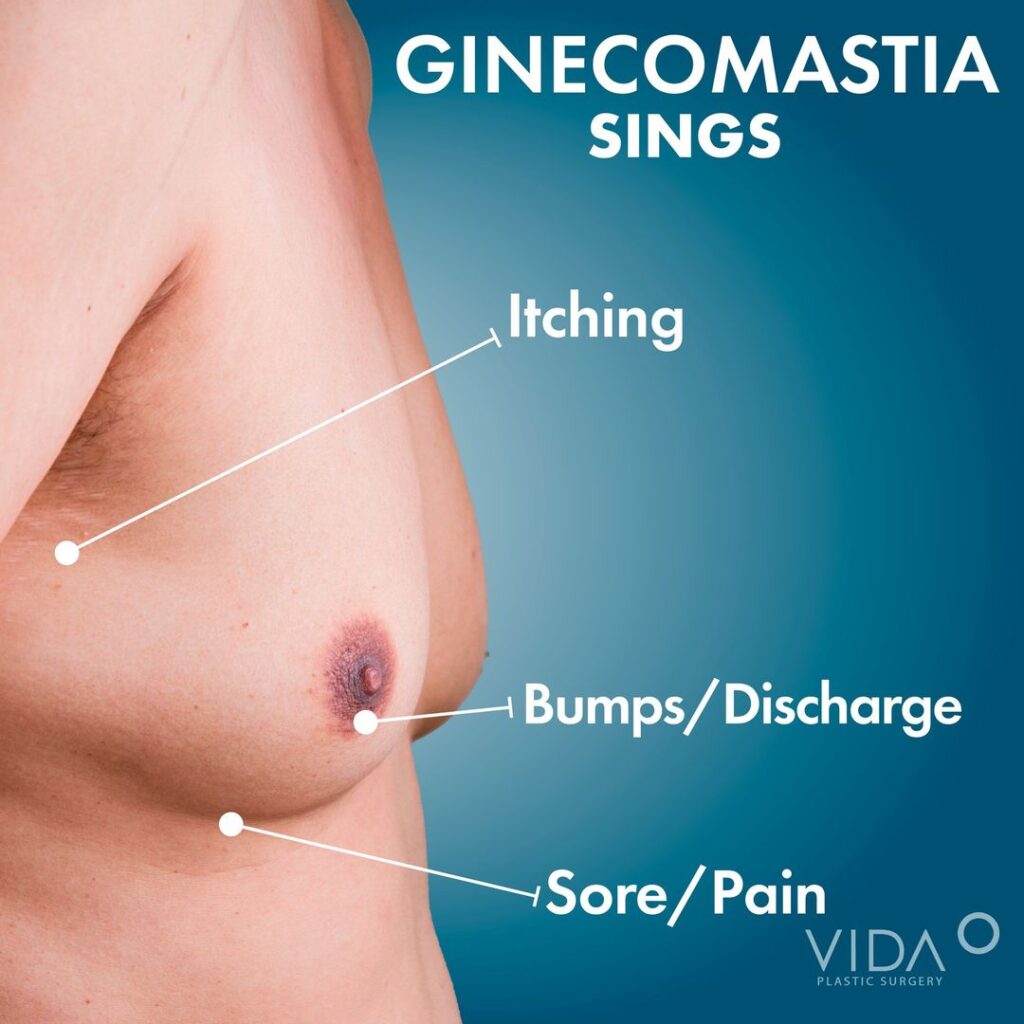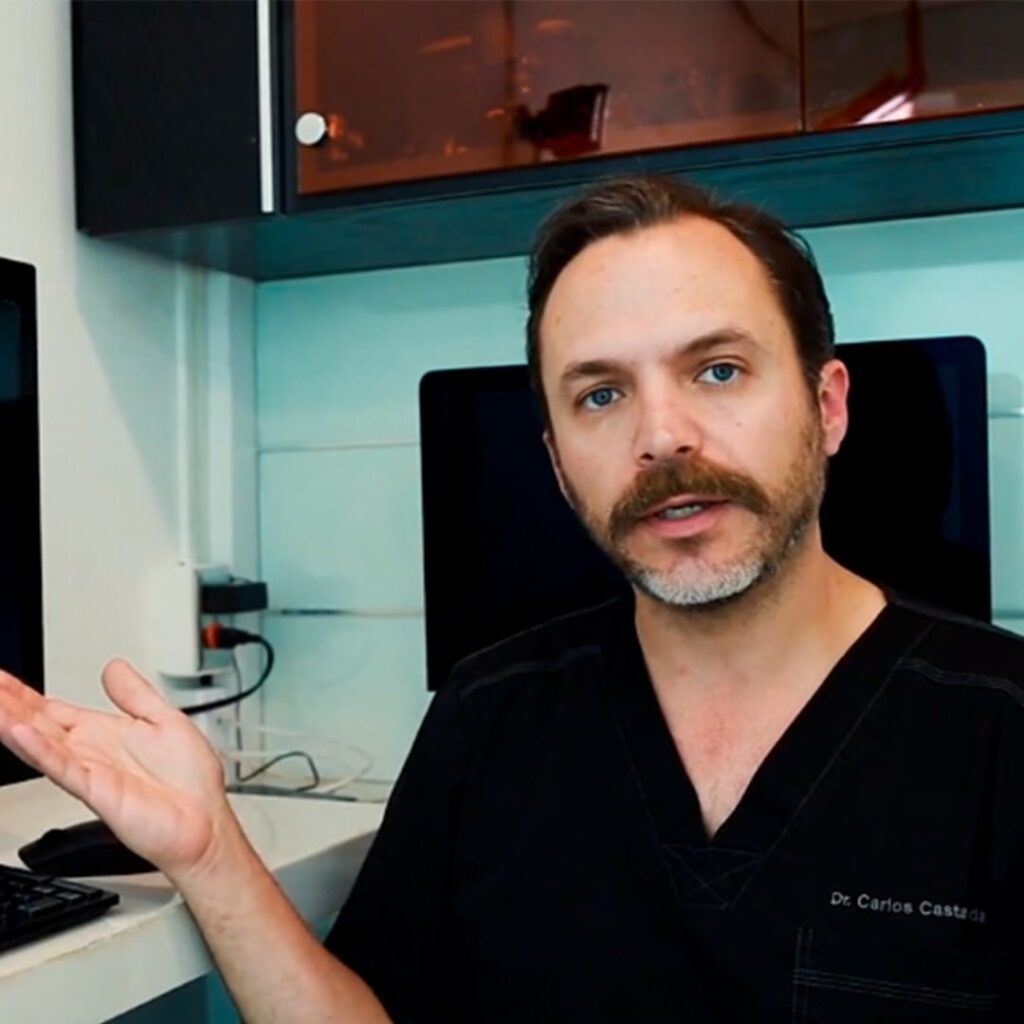Types of Gynecomastia: Does Gynecomastia Come in Different Forms?
You might be wondering whether there is a clinical term for man boobs?”
Well, there is, and it’s called gynecomastia.
For many men, enlarged breasts can be embarrassing. It is common for men who suffer from gynecomastia to avoid taking off their shirts in certain social situations, such as at the pool or to conceal the excess glandular tissue in their breasts by wearing multiple shirts.

So What Causes Gynecomastia?
The term gynecomastia refers to an increase in the volume of male breasts. Most commonly, this condition occurs during periods of hormonal change such as birth, adolescence, and old age.
Medical conditions such as hypogonadism, liver failure, and kidney failure can cause this condition, as can obesity, steroid use, and other pharmacologic agents. The majority of cases of gynecomastia, however, are idiopathic.
1. NORMAL GYNECOMASTIA
Gynecomastia is considered normal for adolescents 12 to 15 years old or for older men over 65 years old. In most cases, the condition will go away on its own within one or two years.
2. ADULT GYNECOMASTIA
Gynecomastia in adults is the most common form. In adult gynecomastia, fat deposits are present in the glandular tissue. A doctor may recommend male breast reduction/gynecomastia surgery after a diagnosis has been made.
3. GLANDULAR BREAST TISSUE GYNECOMASTIA
It is common for bodybuilders who abuse steroids to develop glandular gynecomastia. These types of gynecomastia can only be treated with male breast reduction to remove the glandular tissue.
4. ADOLESCENT GYNECOMASTIA
There is evidence to suggest that adolescent gynecomastia is inherited. A third to a half of boys between the ages of 9 and 14 are likely to develop this condition. In most cases, the gyno will resolve on its own as the boy grows into adulthood. In the event that gynecomastia persists after age 18, surgery may be an option. The excess tissue can be removed by surgeons before the boy reaches adulthood, but it must be recommended by a physician and child development specialist.
5. ASYMMETRIC GYNECOMASTIA
Known as unilateral gynecomastia, this condition affects only one breast or both breasts to varying degrees. It is usually easy to self-diagnose this type of gynecomastia when one breast seems to be larger than the other. Surgery is the most common treatment for asymmetric gynecomastia.
6. SEVERE GYNECOMASTIA
This type of gynecomastia is characterized by sagging skin and severely enlarged breasts. Gynecomastia of this type is most common in overweight or obese men and in older men with reduced skin elasticity. Most patients are recommended to undergo surgery.
7. PSEUDO-GYNECOMASTIA
As opposed to glandular tissue, pseudo-gynecomastia is caused exclusively by adipose tissue. Dietary changes are generally effective in treating the condition. There are some doctors who may recommend surgery.
Did you know that the types of gynecomastia are graded?
They are graded into four categories according to size and excess skin :
Grade I: Small enlargement, no skin excess
Grade II: Moderate enlargement, no skin excess
Grade III: Moderate enlargement with extra skin
Grade III: Marked enlargement with extra skin
Other types of gynecomastia could also include the following grades:
Type 1 gynecomastia
Also known as puffy nipples. Tight skin will be present in patients with swollen nipples. As a result, there is little to no breast tissue to obscure the definition of the pectoralis muscle, allowing the skin to wrap around its border in a straight line.
Type 2 gynecomastia
Rounded chest breast tissue in Type 2 Gynecomastia crosses the pectoralis muscle, giving the patient a feminine, rounded appearance. It’s characterized by a breast lump or fatty tissue that extends over the muscle boundary.
As a result, the chest folds round. Many individuals with mild to moderate breast tissue growth will experience breast discomfort in addition to the apparent form of the expanding tissue.
If addressed, the weight of the breast tissue will eventually cause the skin to loosen and probably advance to Type 3 or Type 4.
Type 3 gynecomastia
Slight breast roll, similar to Type 2 Gynecomastia, Type 3 features excess breast tissue that drapes over the pectoralis muscle. The skin is no longer able to compress the tissue into a tight, rounded look because it has relaxed. Instead, it appears to be horizontal.
Type 4 gynecomastia
Moderate breast roll, similar to type 3, type 4 gynecomastia involves excess breast tissue that spreads into the armpit region. The main distinction is that there is a considerable amount of extra skin, which causes the horizontal chest fold to extend into the arm pit, resulting in a breast roll.
You must consider that eliminating the gynecomastia tissue will result in “deflation” in order to conduct a proper assessment. Knowing how much skin will remain following tissue excision is necessary for evaluation. To obtain long-lasting, masculine chest results, this skin needs to be tightened frequently.
Type 5 gynecomastia
Significant breast roll by definition, type 5 gynecomastia has a considerable amount of excess skin that results in a breast roll that extends past the chest wall and under the armpit. An accurate depiction must consider overall skin deflation caused by the excision of gynecomastia/fatty tissue.
The primary distinction between types 4 and 5 is far more profound, though. Skin will be extra in “two directions” for type 5. This indicates that there is additional skin excess in the side-to-side direction in addition to the up-and-down direction. To achieve the best long-term results for a masculine chest, it is frequently necessary to tighten the skin in both directions in addition to removing fatty tissue and shaping the armpit.
Type 6 gynecomastia
Breast roll with back roll, Type 6 Gynecomastia results in so much extra skin that the breast roll and “back roll” are created. Similar to type 5, extra skin is typically present in “two directions.” In order to properly treat severe gynecomastia, both the excess skin and excess tissue must be removed using male breast reduction, or gynecomastia surgery. This is required to provide the upper torso with a long-lasting V shape as well as a defined chest and sculpted armpits.
So after reading this, you might be wondering, are there gynecomastia treatment options?
The simple answer is “YES!” A gynecomastia treatment plan is different for each patient, but it generally involves treating the underlying illness, lab work, imaging, and, if necessary, surgical intervention.
Get Answers About Male Breast Reduction Surgery
As one of the leading cosmetic and plastic surgery centers, VIDA Wellness and Beauty is known for its dedication to research and patient care. We consult closely with each male breast reduction patient to understand their goals and provide the best options to help them achieve a natural appearance with gynecomastia surgery.
Dr. Castaneda is a bilingual and board-certified plastic surgeon. He is certified by the Mexican Council of Plastic, Aesthetic, and Reconstructive Surgery (CMCPER) and is a member of the Mexican Association of Plastic, Aesthetic, and Reconstructive Surgeons. To find out more about gynecomastia, inquire about male breast reduction surgery, and get answers about gynecomastia surgery cost, call VIDA Wellness and Beauty in Tijuana, Mexico.
Please note that this article does not provide medical advice. It is intended to provide general information only. It should not be used in place of professional medical advice, diagnosis, or treatment. If you are seeking a diagnosis or treatment, please consult your primary physician or a specialist. A health emergency should be reported immediately to your doctor or 911 if you suspect you may be experiencing one.
